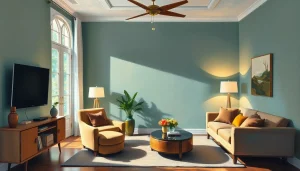From vision boards to million-dollar contracts, the journey of an interior design entrepreneur is a thrilling blend of creativity, business savvy, and the power to transform spaces—and lives. It’s a path that combines the artistry of design with the grit of entrepreneurship, creating a unique and exciting career that’s as diverse as the spaces we inhabit.
Picture this: you’re standing in an empty room, your mind buzzing with possibilities. The blank canvas before you is not just a space waiting to be filled, but a business opportunity waiting to be seized. This is the world of the interior design entrepreneur, where every project is a chance to make dreams come true—both for your clients and yourself.
The Rise of Interior Design Entrepreneurship: More Than Just Pretty Spaces
So, what exactly is an interior design entrepreneur? Think of them as the ultimate space-whisperers, armed with a keen eye for aesthetics and a knack for turning ideas into profitable ventures. These creative powerhouses don’t just pick out throw pillows and paint colors (though they’re pretty darn good at that too). They’re business owners who’ve taken their passion for design and turned it into a thriving enterprise.
And boy, is there a demand for their skills! In today’s Instagram-obsessed world, where everyone’s home is just a swipe away from being judged by the masses, professional interior design services are hotter than a fresh cup of pour-over coffee in a minimalist mug. From cozy apartments to sprawling mansions, from hip startups to Fortune 500 offices, everyone wants a space that’s not just functional, but downright fabulous.
But let’s not sugarcoat it—this industry isn’t all fabric swatches and feng shui. It’s a field ripe with opportunities, sure, but it’s also packed with challenges that’ll test your mettle faster than you can say “accent wall.” You’ll need to juggle client expectations, budget constraints, and tight deadlines, all while keeping your creative juices flowing and your business growing. It’s not for the faint of heart, but for those with the right mix of passion and perseverance, it’s a career that can be as rewarding as it is demanding.
Sharpening Your Design Skills: From Doodles to Dollars
Now, you might be thinking, “I’ve binge-watched every home makeover show on Netflix. I’m totally ready to be an interior design entrepreneur!” Hold your horses, champ. While a good eye and a passion for pretty things are great starting points, you’ll need to develop some serious skills to make it in this competitive field.
First things first: education. While you don’t necessarily need a fancy degree to become an interior design entrepreneur (hello, artist entrepreneurs!), formal education can give you a solid foundation in design principles, space planning, and the technical aspects of the job. Plus, it looks pretty snazzy on your business cards. Consider programs in interior design, architecture, or even fine arts to hone your craft.
But don’t stop at the classroom door. Certifications from professional organizations like the National Council for Interior Design Qualification (NCIDQ) can add some serious credibility to your name. It’s like getting a gold star, but for grown-ups who want to make money designing beautiful spaces.
Speaking of beautiful spaces, let’s talk portfolios. Your portfolio is your visual resume, your design DNA, your ticket to the big leagues. It should showcase your versatility, creativity, and ability to work with different styles and budgets. Start small if you have to—offer to redesign your friend’s sad bachelor pad or your aunt’s outdated living room. Document everything, and soon you’ll have a collection of before-and-after shots that’ll make potential clients swoon.
But here’s the kicker: the design world moves faster than a toddler in a newly redecorated room. Trends come and go quicker than you can say “millennial pink,” so staying updated is crucial. Follow design blogs, attend trade shows, and for the love of all that is stylish, never stop learning. Whether it’s mastering the latest 3D rendering software or understanding the principles of biophilic design, staying ahead of the curve is what separates the amateurs from the pros.
And while we’re on the subject of staying ahead, don’t forget to develop your own unique design style and philosophy. Sure, you can recreate that Pinterest-perfect living room, but can you create spaces that are uniquely you? Your design philosophy is your secret sauce, the special blend of creativity and practicality that sets you apart in a sea of professional entrepreneurs.
Crafting Your Business Blueprint: More Than Just Pretty Pictures
Alright, so you’ve got the skills, the style, and enough fabric swatches to wallpaper a small country. Now it’s time to put on your business hat (make sure it complements your outfit, of course). Creating a solid business plan is like designing the perfect room—it needs structure, balance, and a clear vision.
First up: identifying your target market and niche. Are you the go-to designer for eco-conscious millennials looking to turn their tiny apartments into Instagram-worthy havens? Or perhaps you specialize in creating opulent spaces for luxury hotels? Knowing your niche helps you focus your efforts and stand out in a crowded market. It’s like being the Picasso of pillow arrangements or the Michelangelo of man caves.
Next, determine your service offerings and pricing strategy. Will you offer full-service design packages, or do you prefer to focus on specific areas like kitchen remodels or office spaces? And how much is your creative genius worth? Pricing can be trickier than choosing between eggshell and ecru, but it’s crucial to get it right. You want to be competitive, but also value your time and expertise. Remember, you’re not just selling pretty rooms—you’re selling your unique vision and problem-solving skills.
Now for the not-so-fun (but oh-so-necessary) part: setting up your business structure and meeting legal requirements. LLC? Sole proprietorship? S-corp? It might sound like alphabet soup, but choosing the right business structure is crucial for protecting your assets and setting yourself up for success. Don’t be afraid to consult with a lawyer or accountant—think of them as the structural engineers of your business blueprint.
Last but not least, let’s talk marketing and branding. In a world where everyone and their cat has an Instagram account showcasing their “eye for design,” how will you stand out? Your brand is more than just a logo or a catchy tagline—it’s the essence of who you are as a designer and entrepreneur. It’s what makes clients choose you over the countless other options out there. So take the time to develop a strong, cohesive brand that reflects your unique style and values. And remember, in the world of interior design, looks really do matter!
Building Your Design Empire: One Client at a Time
Now that you’ve got your business basics sorted, it’s time to build your empire. And in the world of interior design, that means building a strong client base and network. It’s like creating the perfect room—you need the right elements, in the right places, working together harmoniously.
First up, let’s talk about the elephant in the room (no, not that oversized statement piece you’ve been eyeing): social media. Love it or hate it, platforms like Instagram, Pinterest, and Houzz are goldmines for interior design entrepreneurs. They’re like your very own digital portfolio, accessible to potential clients 24/7. Share your best work, behind-the-scenes peeks, and even your design process. Just remember, it’s not about the number of followers—it’s about engaging with the right audience. Quality over quantity, just like in design.
But don’t limit yourself to the digital realm. Networking with industry professionals and potential clients in the real world is crucial. Attend design events, join professional organizations, and don’t be shy about striking up conversations at your local home improvement store. You never know when that person debating between two shades of gray paint might turn into your next big client.
Speaking of connections, collaboration is key in this industry. Partner up with complementary businesses like renovation entrepreneurs, real estate agents, or furniture stores. It’s a win-win situation—you get access to their client base, and they get to offer added value to their customers. Plus, it’s always fun to have someone to geek out with over the latest design trends.
But here’s the real secret sauce to building a thriving interior design business: exceptional customer service. In a world where anyone can order a “room in a box” online, what sets you apart is the personalized experience you provide. Listen to your clients, understand their needs (even the ones they can’t articulate), and go above and beyond to exceed their expectations. Happy clients don’t just come back—they become your biggest cheerleaders, singing your praises to anyone who’ll listen. And in this business, word-of-mouth referrals are worth their weight in gold-plated door handles.
Juggling Projects and Personalities: The Art of Design Management
Alright, so you’ve got clients knocking down your beautifully designed door. Fantastic! But now comes the tricky part: managing all those projects and personalities without losing your mind (or your impeccable sense of style).
First things first: project management. It’s not the sexiest part of the job, but it’s what separates the pros from the amateurs. Treat each project like a well-designed room—everything needs to have its place and purpose. Use project management tools to keep track of timelines, budgets, and tasks. And just like you wouldn’t put a delicate silk pillow in a kids’ playroom, learn to prioritize and allocate your resources wisely.
Communication is key in this business. You need to be able to translate your creative vision into language your clients (and contractors) can understand. It’s like being a design diplomat, negotiating between the world of aesthetics and the realities of construction. Be clear, be patient, and always, always set realistic expectations. Nobody likes surprises in this business—unless it’s a perfectly staged reveal, of course.
Speaking of realities, let’s talk about budgets and timelines. They’re like the load-bearing walls of your project—not always pretty, but absolutely essential. Learn to work within constraints without compromising on quality or style. It’s a delicate balance, but mastering it will set you apart as a true professional.
And then there are the clients. Oh, the clients. From the indecisive waverer to the micromanager, from the budget-buster to the “I want it yesterday” demander, you’ll encounter all types. The key is to remain calm, professional, and solution-oriented. Remember, you’re not just designing spaces—you’re managing expectations, soothing anxieties, and sometimes, playing therapist. It’s all part of the job, darling.
Scaling Up: From Solo Designer to Design Mogul
Congratulations! You’ve successfully navigated the choppy waters of starting your interior design business. Your portfolio is bursting with stunning projects, your client list is growing, and you’re finally able to afford that statement piece you’ve been eyeing for months. But why stop there? Let’s talk about scaling your business and taking it to the next level.
First up: hiring and managing a team. As much as we’d like to think we can do it all, there comes a point when you need to delegate. Start small—maybe a part-time assistant to handle administrative tasks, or a junior designer to help with drafting and sourcing. As you grow, you might add project managers, marketing specialists, or even other designers with complementary skills. Remember, a great team is like a well-designed room—each element should complement and enhance the others.
Next, consider expanding your service offerings. Maybe you start with residential design but branch out into commercial spaces. Or perhaps you add design consulting to your repertoire, helping other businesses with their branding and spatial needs. The key is to grow strategically, always keeping your core strengths and brand identity in mind.
As your business expands, don’t be afraid to explore new markets and opportunities. Maybe you start offering virtual design services to clients across the country (or even globally). Or perhaps you develop a line of home decor products, channeling your inner fashion designer entrepreneur. The world is your oyster—or should we say, your blank canvas?
But here’s the thing about scaling: it requires systems and processes. As your business grows, you need to implement structures that allow for smooth operations and consistent quality. This might mean investing in better project management software, developing standardized client onboarding processes, or creating design templates that can be customized for each project. It’s not the most glamorous part of the job, but it’s what allows you to work on your business, not just in it.
The Future is Bright (and Beautifully Designed)
As we wrap up this whirlwind tour of the interior design entrepreneurship world, let’s take a moment to reflect on what we’ve covered. From honing your design skills and building a solid business foundation to managing projects and scaling your empire, the path of an interior design entrepreneur is as varied and exciting as the spaces you’ll create.
But what does the future hold for this dynamic industry? Well, if current trends are any indication, the demand for professional interior design services isn’t going anywhere. In fact, with the rise of remote work and the increasing importance of our home environments, there’s never been a better time to be in the business of creating beautiful, functional spaces.
Technology will continue to play a big role, with virtual and augmented reality making it easier than ever to visualize designs before a single pillow is placed. Sustainability and wellness-focused design are also on the rise, presenting exciting opportunities for designers who can create spaces that are not just beautiful, but also good for people and the planet.
To all you aspiring interior design entrepreneurs out there, here’s my parting advice: dream big, work hard, and never stop learning. This industry rewards creativity, perseverance, and a keen business sense. It’s not always easy, but if you’re passionate about design and have an entrepreneurial spirit, there’s no limit to what you can achieve.
Remember, every great design starts with a vision. So grab that sketchpad, fire up that home office, and start turning your interior design dreams into a thriving business reality. Who knows? Your next design could be the one that changes someone’s life—and launches your career into the stratosphere.
Now, if you’ll excuse me, I have a content creation project to finish and a living room to redecorate. After all, even author entrepreneurs need a stylish space to write in!
References:
1. American Society of Interior Designers. (2021). “State of the Industry Report.” ASID.
https://www.asid.org/resources/resources/view/resource-center/280
2. Bonda, P., & Sosnowchik, K. (2020). “Sustainable Commercial Interiors.” John Wiley & Sons.
3. Brown, R. (2018). “Planning and Managing Interior Projects.” Fairchild Books.
4. Council for Interior Design Qualification. (2022). “NCIDQ Certification.” CIDQ.
https://www.cidq.org/certification-overview
5. Grimley, C., & Love, M. (2018). “The Interior Design Reference & Specification Book Updated & Revised: Everything Interior Designers Need to Know Every Day.” Rockport Publishers.
6. Interior Design Society. (2022). “Industry Trends Report.” IDS.
7. Knackstedt, M. V. (2019). “The Interior Design Business Handbook: A Complete Guide to Profitability.” John Wiley & Sons.
8. Piotrowski, C. M. (2020). “Professional Practice for Interior Designers.” John Wiley & Sons.
9. U.S. Bureau of Labor Statistics. (2021). “Interior Designers : Occupational Outlook Handbook.” U.S. Department of Labor.
https://www.bls.gov/ooh/arts-and-design/interior-designers.htm
10. Winchip, S. M. (2017). “Fundamentals of Lighting.” Fairchild Books.












Would you like to add any comments? (optional)